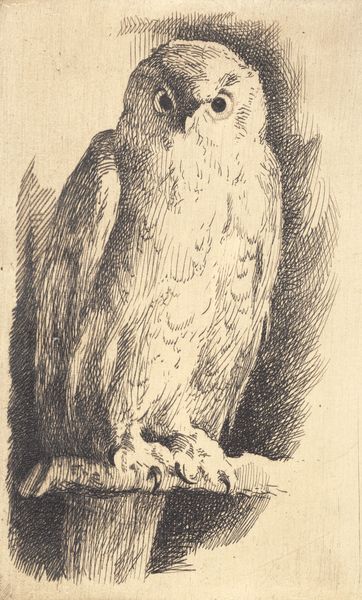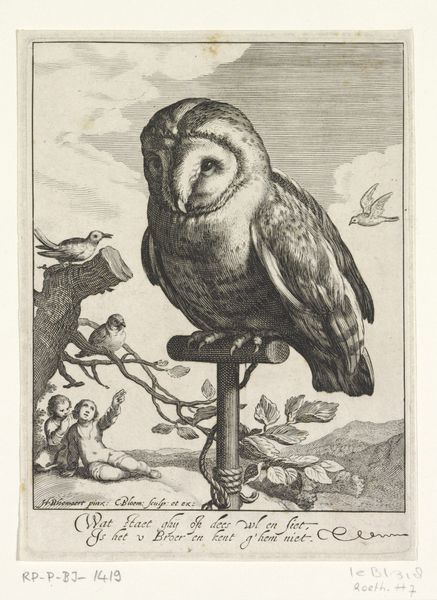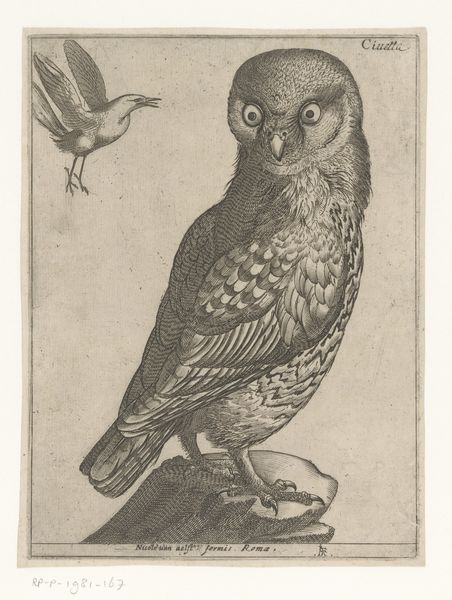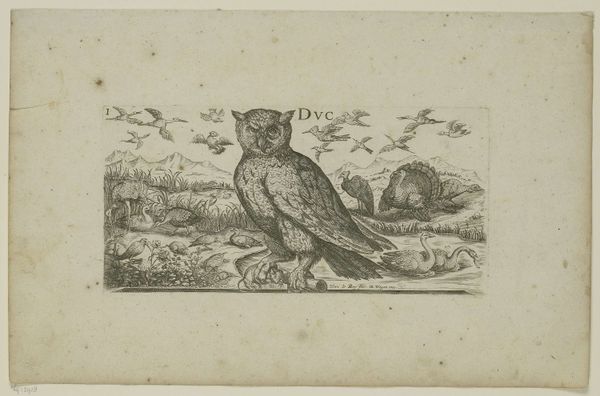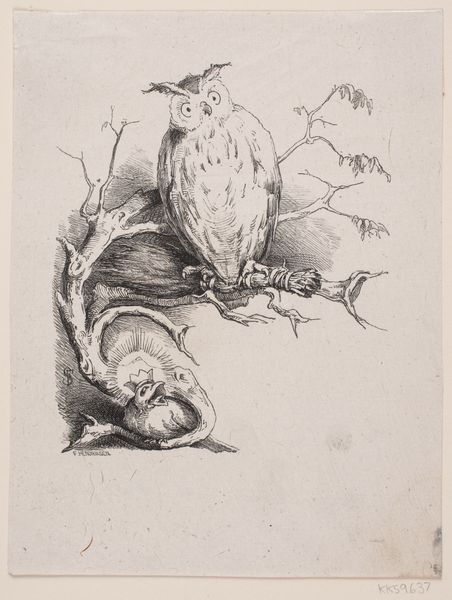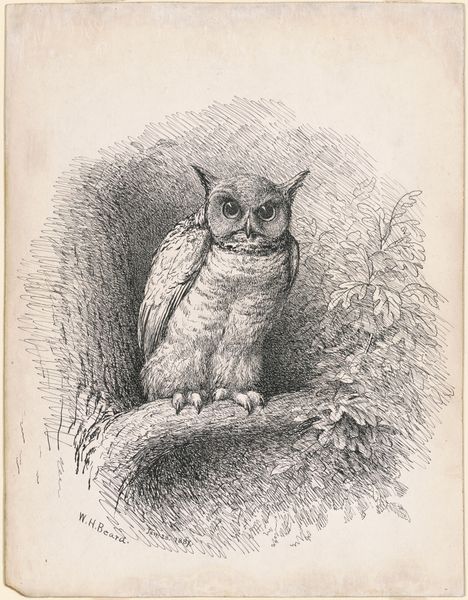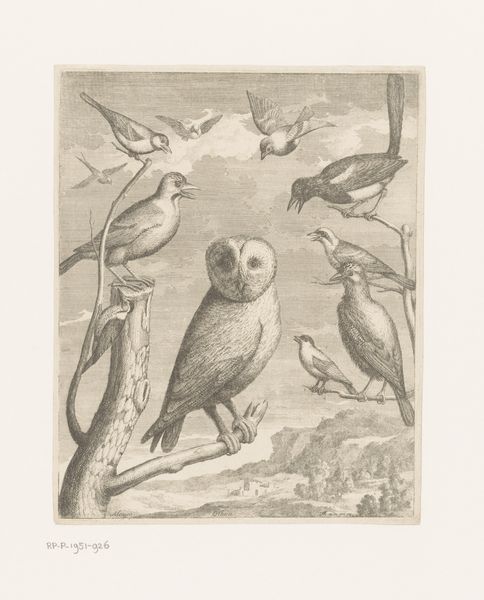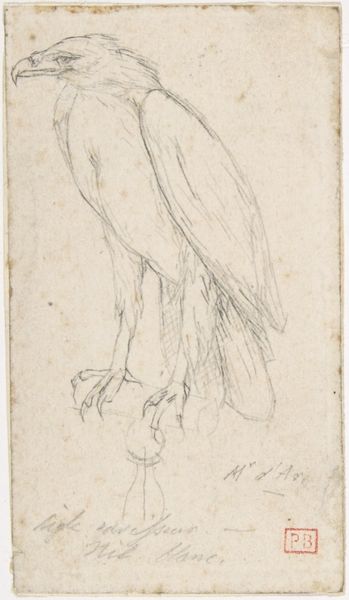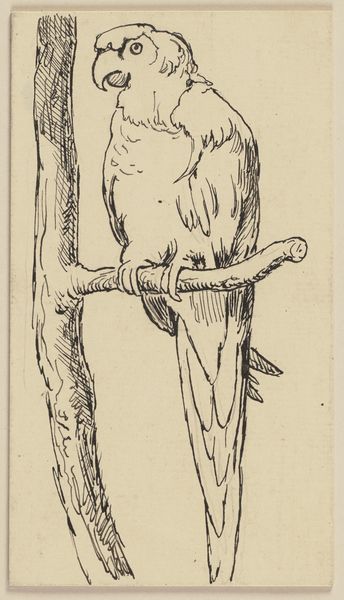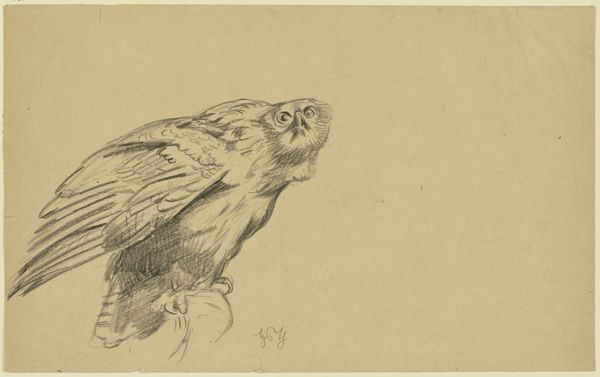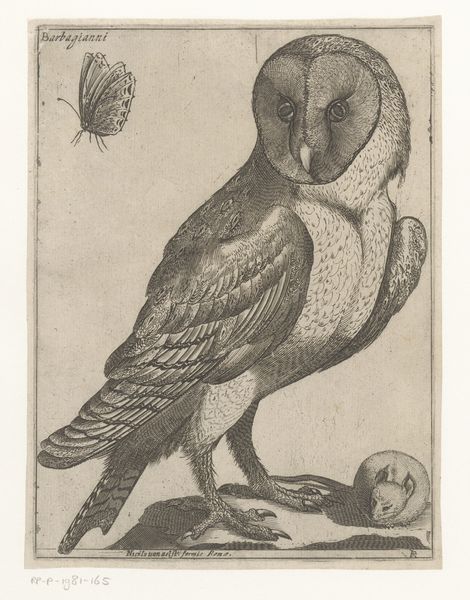
drawing, pencil
#
portrait
#
drawing
#
baroque
#
pencil
Dimensions: 340 mm (height) x 263 mm (width) (bladmaal)
Curator: This drawing presents a remarkably composed image of an owl, rendered in pencil, by Marcus Tuscher in 1728. It's currently part of the collection at the SMK, the National Gallery of Denmark. Editor: My first impression is of a kind of melancholic elegance. The grey tones and the slight downward tilt of the owl's head evoke a sense of quiet contemplation, perhaps even weariness. Curator: Yes, it's intriguing considering its history and purpose. Tuscher created this portrait for Baron Philipp von Stosch, a well-known antiquarian and collector. These images of animals held great significance in his curated world. Editor: So, the choice of an owl then speaks volumes. Its symbolic meaning, particularly wisdom and watchfulness, may well mirror the Baron's own intellectual pursuits. Look how the light delicately defines the texture of the feathers! The subtle cross-hatching creates such depth. Curator: Precisely, and it tells us something about the 18th-century fascination with the natural world, filtered through the lens of aristocratic collecting. It was a way to claim and categorize knowledge, solidifying their social positions through the control of artistic and scientific output. Editor: Do you think that explains why there is also a kind of architectural or stage-like quality, where the ledge that the owl stands on and tree are set back in an ordered, well-proportioned setting? That could signal, perhaps, that nature here is not depicted on its own terms, but serving at the whim of its commissioner. Curator: Precisely! Even the seemingly innocent act of sketching an owl became an emblem of power and learning within a specific social context. Editor: It's striking how Tuscher used such simple means to capture the bird's essential nature and its allegorical charge within von Stosch’s collection. The textures feel incredibly tactile given they're only lightly rendered with pencil. Curator: Reflecting on this piece reminds us how artworks function not just as aesthetic objects, but as agents in a complex web of historical and social dynamics. Editor: And I am struck again by how so much can be conveyed by such an unassuming, finely observed study of this lone, dignified owl.
Comments
No comments
Be the first to comment and join the conversation on the ultimate creative platform.
